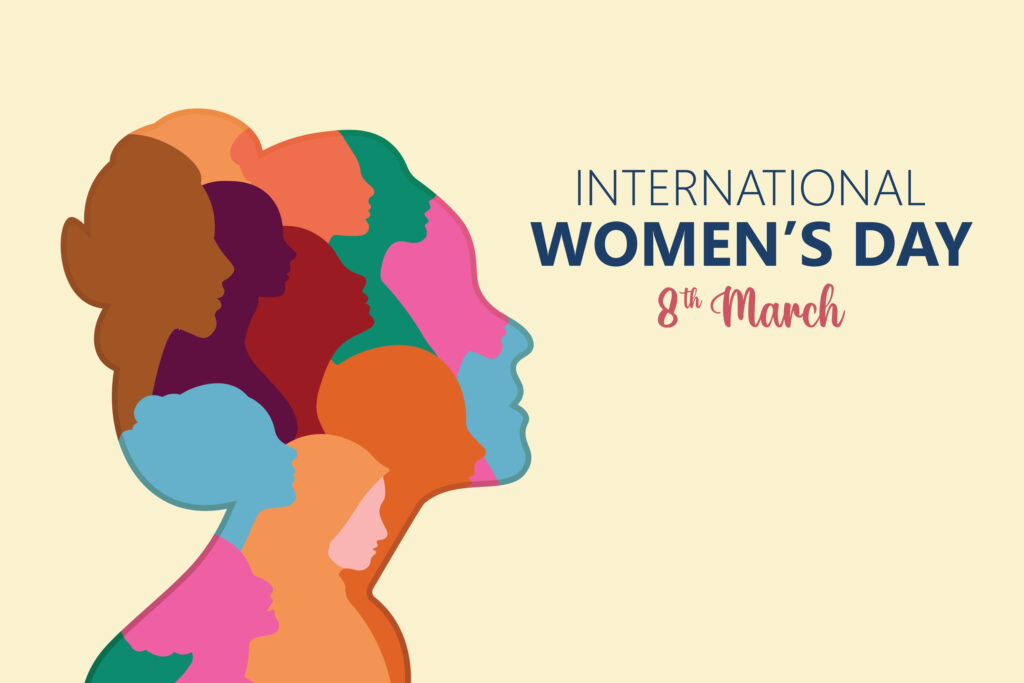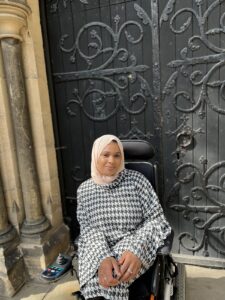Throughout history, many prominent disabled people have played an influential role in shaping the international Disability Rights Movement.

One woman within this movement that has inspired me is Judy Heumann. Judy contracted Polio at 18 months old and was a wheelchair user. Widely known as the ‘the mother of the disability rights movement’ Judy was at the forefront of significant disability rights demonstrations, including the Section 504 Sit-In. This protest saw approximately 150 disabled people refuse to leave the Health, Education and Welfare Federal Building, as a demonstration against the government’s failure to pass Section 504 of the Rehabilitation Act (an act to prevent discrimination against disabled people in societal areas that received government funding, such as in schools and on public transport). Judy helped spearhead the passage of the disability rights legislation and was featured in the Oscar-nominated documentary film: Crip Camp: A Disability Revolution.
The documentary captures the lives of young disabled people attending camp Jened in America, a camp for disabled teenagers intended to provide a safe space for self-expression. Rather than defining them by their impairments (the lens through which larger society viewed them), the camp focused on fun and accessible activities. The film traces how the campers went on to advocate for disability rights in America, depicting the early beginnings of the American Disability Rights Movement. Heumann played a leading role in this at a young age, organising group meetings so that everyone had the opportunity to express themselves.
The 504 Sit-In which Heumann led was monumental. In 1973 the first federal civil rights protection for people with disabilities, section 504 of the Rehabilitation Act, was signed into law. This was a breakthrough in the Disability Rights Movement as section 504 recognised that society had historically treated disabled people as second-class citizens, based on deep-rooted stereotypes and prejudice. Those attitudes had translated into pity and policies that were based on the Medical Model of Disability, rather than understanding disability rights as a societal responsibility. Section 504 dramatically changed that social and legal perception, and would not have been possible without the efforts of Heumann and the other protestors who staged it. It was a pivotal moment in disability rights activism, but it’s important to remember that Medical Model attitudes still persist today.
I highly recommend watching this documentary on Netflix, as it provides great insight into how Judy Heumann and the other advocates raised public awareness of disability issues. A quote by Heumann that stands out to me as a person with lived experience of disability is ‘disability only becomes a tragedy when society fails to provide the things needed to lead one’s daily life’.
I’ve talked a lot about the American Disability Rights Movement, but let’s shine a light on one influential woman in the UK’s disability rights scene: Barbara Lisicki. As the co-founder of the Disabled People’s Direct-Action Network (DAN), she’s not only recognized as the first disabled stand-up comedian in Britain but also made a significant impact in the 1980s disability arts field. Barbara, along with Alan Holdsworth, organised the Block Telethon demonstrations in 1990 and 1992, protesting the tokenistic portrayal of disabled people in advertising and challenging the negative framing of disability. To delve deeper into her story and advocacy, I recommend watching the film “Then Barbara Met Alan,” which illustrates their journey and how it contributed to the Disability Discrimination Act of 1995 in the UK. Barbara played a crucial role in challenging the Charity Model of Disability, advocating for access rather than portraying disabled people as needing charity.
In contrast to the Charity Model, the Social Model of Disability argues that societal barriers are what prevent disabled people from participating fully in society, rather than their impairments. This leads me to my next point: as a wheelchair user, I face barriers in my daily life, from attitudinal obstacles due to the social stigma around disabilities to structural barriers such as a lack of accessibility in both building and public transport design. I rely on public transportation quite heavily, especially when socialising with my friends, going to work, and accessing events and opportunities in my local area. It enables me to live an independent, fulfilled life, and give back to my community. However, travelling via train or bus isn’t always straightforward. For example, buses usually have one space for a wheelchair, and this is sometimes occupied by pushchairs. This leaves minimal room for my chair, and bus drivers are not always accommodating or don’t always take the lead in advocating for my rights, which can be frustrating. It can be daunting to rely on others to accommodate your access needs.
Despite this, I have also had many positive experiences whilst using public transport. My bus pass allows me to travel via bus for free, enabling me to lead a fulfilling and independent life. I have also encountered many bus drivers who have been extremely friendly and accommodating; they ensure they park as close to the kerb as possible so that I can safely embark and disembark the bus, and advocate for my needs when required. I often use the train for work and social purposes; apps such as the Passenger Assistance app allow me to inform the staff of my needs in advance. I personally feel reassured requesting assistance this way, as I know my access needs have been communicated. Staff await my arrival at the platform with a ramp so that I can safely disembark. Furthermore, I often use the Sociability app to find new restaurants that are suitable for my needs as a wheelchair user. The app informs me of restaurants in the area and their accessibility features. This includes step- free access, accessible toilets, sensory considerations like lighting and noise, and much more. I highly recommend the Sociability app for disabled people looking for a new restaurant to visit with their friends.
Social media is also brimming with advice for travelling with a disability, in addition to access reviews of tourist attractions from the perspective of individuals with lived experience. (I personally love to create these posts as well as read them!). There are lots of female disability advocates using their platforms to advocate for disabled rights, especially when it comes to more inclusive public transport systems. It’s imperative to raise awareness of the availability of this information, as it can be challenging to find things online. Social media is a great tool to explore whether a new country or city is accessible for one’s individual access suitable needs. In my experience, there is nothing more discouraging than exploring somewhere new only to find lots of steps, busy, cobbled, narrow streets, steep hills, poor transport options, or minimal accessible tourist attractions. This can lead to a waste of time and money.
Finally, public transport, whether in your city or abroad, can be an intimidating experience. However, if you are a disabled person who uses public transport, I encourage you to explore and share your experiences. As a community, we can advocate for improvements for future generations and as Judy Heumann’s work is a testament, over time we can see the impact of our actions.
About the Author

Umaymah Dakri, 23.
Disability awareness and accessibility advocate.
Disability.living on Instagram.